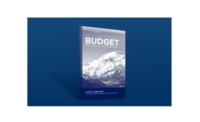...efforts and states’ monitoring for levels of harmful pollutants. “The President’s request reflects clearly the premium he and his administration place on clean air,” he says.
Other agencies would get modest increases for some programs as well. The budget requests $28.4 billion for the Dept. of Energy, up from $26.4 billion enacted in 2010.
Nearly $2.4 billion would be provided for energy-effiency and renewable-energy programs, an increase of $113 million over the 2010 appropriation, including $302 million for solar energy, $220 million for biofuels and biomass research and development, and $231 million for energy-efficient building technologies. In addition, increases are requested for the Federal Energy Management program, which oversees implementation of a presidential executive order mandating energy savings in federal facilities, as well as DOE’s portion of the ENERGY STAR program. The Alliance to Save Energy President Kateri Callahan says, “We applaud the modest increases requested for these key programs in an overall DOE energy-effiency budget that is essentially flat—which is testament to how essential these programs are, even at a time of federal budget constraint.” However, she says the Alliance would have liked to have seen a larger increase for ENERGY STAR, which “received a far too modest increase of only about 5%, to $55.4 million.”
The DOE budget also would triple new loan authority for nuclear power facilities, to $54.5 billion, and calls for an additional $500 million in credit subsidies to support $3 billion to $5 billion in loan guarantees for innovative renewable-energy and energy-efficiency projects.
For the Dept. of Transportation, the budget seeks $78.8 billion, up 2.3% from 2010. It includes $41.3 billion for the core highway program, a 1% increase; $10.8 billion for public transportation, a 1% hike, and $3.5 billion for the federal airport grants program, the same as 2010.
Jack Basso, the American Association of State Highway and Transportation Officials director of program, finance and management, says the budget “at least keeps us in one piece…and didn’t call for any reductions.” Basso adds, “The big issue for us is, we really need to get a long-term authorization bill in place, funded at [a] significantly increased level—somewhere in the range of $500 billion annually versus the last bill’s $280 billion.”
The new infrastructure fund would support transportation projects valued at $25 million or more. Transportation Secretary Ray LaHood told reporters during a Feb. 1 briefing the infrastructure fund would carry out Obama’s campaign pledge to set up an infrastructure bank to finance major projects.
Asked about the outlook for congressional approval of the infrastructure fund proposal, LaHood said, “I think the prospects are very bright....There’s a great deal of interest in this concept in the Senate. And I believe that the fact the President talked about it during the campaign as a way to fund large, significant projects around the country—it’s going to have some pretty good standing.”
The release of the voluminous budget marks only the beginning of months of debate and wrangling on Capitol Hill over federal spending for fiscal 2011, which begins on Oct. 1, 2010.
One senior Democrat, House Appropriations Committee Chairman David Obey (Wis.), made clear lawmakers would take an active role in shaping the final 2011 spending numbers. Obey said, “While we may differ on details, our committee will meet the President’s target for appropriations. We will not exceed his requested level for appropriations, but we will also not exempt any department or activity from review, including foreign aid and the Pentagon, because none of them are without waste.”
Republicans were critical of Obama’s recommended blueprint. The House Budget Committee’s ranking GOP member, Paul Ryan (Wis.), said Obama’s proposal “is nothing more than a plan for more of the same—a very aggressive agenda of more government spending, more taxes, more deficits, and more debt—with just a few cosmetic budget maneuvers to give the illusion of restraint.”






















Post a comment to this article
Report Abusive Comment